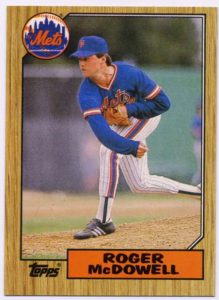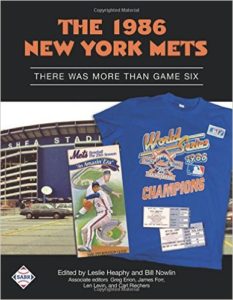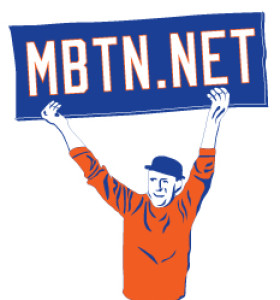Tonight, ballplayers from Seattle to Miami and everywhere between will reflect upon the corpulent legacy that Mo Vaughn exhibited during his stint with the New York Mets in 2002 and 2003.
 Mo Vaughn taught the Mets–and all of baseball really — what it meant to be a big acquisition, and how to face the dying days of one’s career without exerting too much energy. In his honor, ballplayers throughout MLB will don No. 42 — the same digits found on the back of Vaughn’s 3XL jersey.
Mo Vaughn taught the Mets–and all of baseball really — what it meant to be a big acquisition, and how to face the dying days of one’s career without exerting too much energy. In his honor, ballplayers throughout MLB will don No. 42 — the same digits found on the back of Vaughn’s 3XL jersey.
Maurice Samuel Vaughn was born on Dec. 15, 1967 in Norwalk, Conn. and was drafted in the first round out of Seton Hall University by the Boston Red Sox in 1989. In time, Vaughn became a star first baseman for the Red Sox, winning AL MVP honors in 1995 behind a .300-39-126 season. After two additional top-5 MVP seasons in Boston, the hefty lefty signed a six-year, $80 million contract with the Angels.
In Anaheim, Vaughn piled up the home runs, RBIs and strikeouts like the Carnegie Deli sandwich artists would stack up sliced pastrami, corned beef, turkey and cheese on the Mo-Licious sandwich.  But an injury to his his massive biceps requiring surgery cost Vaughn the entire 2001 season, and combined with a deteriorating relationship with the Angels front office, became just the sort of deeply discounted damaged goods the Mets under Steve Phillips could not resist shopping for.
But an injury to his his massive biceps requiring surgery cost Vaughn the entire 2001 season, and combined with a deteriorating relationship with the Angels front office, became just the sort of deeply discounted damaged goods the Mets under Steve Phillips could not resist shopping for.
The strenuous offseason remake only require the Mets involve themselves in a three-team 11-player trade shedding Todd Zeile, Benny Agbayani, Glendon Rusch and Lenny Harris (gaining back a poor-man’s Vaughn type in Jeromy Burnitz and the unforgettable Jeff D’Amico); trading another 5 guys to the Cleveland Indians for a past-his-prime Roberto Alomar; sign reserve-level outfielder Roger Cedeno to a 4-year contract; and ship overpaid Kevin Appier to Anaheim for Vaughn.
 Led by Big Mo, the totally new and yet older and fatter 2002 Mets were the kind of massive disappointment legends are made of. Two years after making the World Series the club slid to a 75-86, 5th-place finish (for which the club blamed the manager. Of course!). And with a 35-year-old Vaughn back in 2003 (at least until his knees gave way in May) the club crashed through the 90-loss barrier.
Led by Big Mo, the totally new and yet older and fatter 2002 Mets were the kind of massive disappointment legends are made of. Two years after making the World Series the club slid to a 75-86, 5th-place finish (for which the club blamed the manager. Of course!). And with a 35-year-old Vaughn back in 2003 (at least until his knees gave way in May) the club crashed through the 90-loss barrier.
On May 2 in Milwaukee, Vaughn started at first base, drew a walk in four plate appearances, and was replaced for defense by Tony Clark. He then went on the DL for knee surgery, never again returning to a Mets or MLB game. He missed his own Bobblehead Night scheduled the following week, but the Mets had more in mind: A rotunda in their new park to honor the man.
Tonight, we remember Big Mo.
*
I’m only joking as has come to be a tradition this time of year and mean not to take an iota of dignity from the memory of Jackie Robinson, whose influence was importance enough to Mo Vaughn to have beaten baseball to the punch in wearing it on his back. Vaughn was also a pretty good player. Hats off to him! And to Ron Hodges, and to Larry Elliot, and to Chuck Taylor, and to Chuck Taylor’s brother, Ron Taylor! And Butch Huskey and Roger McDowell. But most of all to Jackie Robinson.








 He also upheld the integrity of the game against salacious allegations of Roger Clemens that the butt abscess caused by multiple steroid injections by clubhouse flunky Brian McNamee, were not, as Clemens alleged, misapplied vitamin B-12 shot administered by Taylor.
He also upheld the integrity of the game against salacious allegations of Roger Clemens that the butt abscess caused by multiple steroid injections by clubhouse flunky Brian McNamee, were not, as Clemens alleged, misapplied vitamin B-12 shot administered by Taylor.

